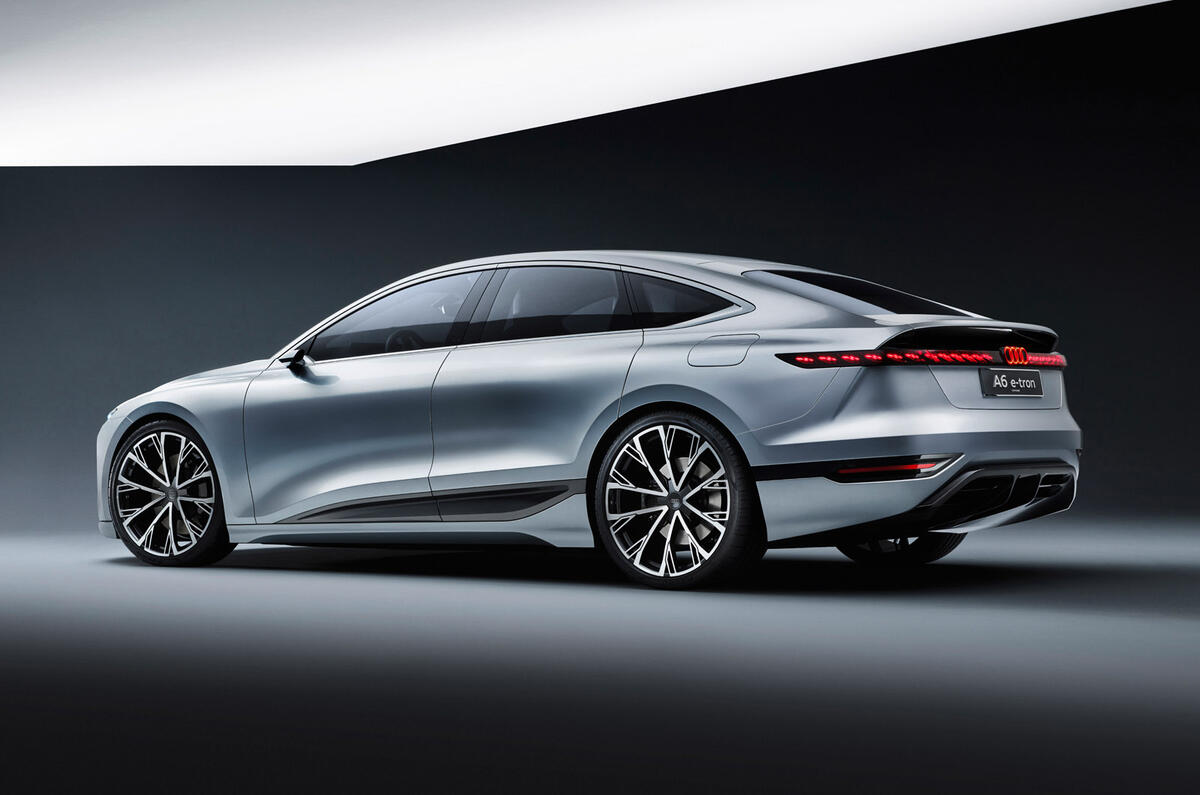The Audi A6 E-tron concept previews a new family of EVs that will be built on the Premium Platform Electric (PPE) architecture the firm is co-developing with Porsche, and is set to go into production alongside the existing combustion-engined A6 in 2023.
Revealed alongside the Audi Q4 E-tron at the Shanghai motor show, the A6 E-tron concept will be the second production car from Audi to use the PPE underpinnings. It will follow the Audi Q6 E-tron SUV, which has not yet been officially shown but which will be revealed in the second half of next year.
Unlike the performance- oriented J1 underpinnings of the Audi E-tron GT, the PPE architecture is designed for premium-focused SUVs and lower-slung models in the B, C and D segments. Porsche will first use the PPE for the all-electric version of the next-generation Porsche Macan, which launches next year as a sister car to the Q6 E-tron.
The A6 E-tron concept’s platform houses a 100kWh battery that gives a range of more than 435 miles. The PPE structure enables the battery pack to be spread out across the chassis for minimal incursion into the cabin. This flexibility allows the platform to be used for both high- riding and low-slung vehicles “without any changes to the basic architecture”, according to Audi. The wheelbase and battery size are scalable, while the wheels are pushed into the corners to maximise both front and rear leg room.

The A6 E-tron has been revealed with a motor on each axle and combined outputs of 469bhp and 590lb ft, but Audi says some PPE-based models will be offered with a single motor on the rear axle for improved range and a lower price. Like the E-tron GT and Porsche Taycan, all PPE cars will come with 800V charging capability, allowing for charging at speeds of up to 270kW – a first, Audi says, for the “high-volume mid-range and luxury segment”. The firm estimates that some 186 miles of charge can be added in just 10 minutes.





















Join the debate
Add your comment
@Bimfan I do agree it's quite strange that so many manufacturers are keeping mock grills on EVs. Is there nothing else they can think of? I understand there's probably some NCAP rules on what you can get away with but something like the Hyundai Prophecy concept and IONIQ 5 show two different styles of grill-less design. And they're not supposed to be the stylish guys!
Some designer really needs to come up with a 'front grille' design that looks less naff than a blank painted plate with a few slots or dimples in it, for their electric cars.
At least the grille is less hideous than most Audi barn doors.